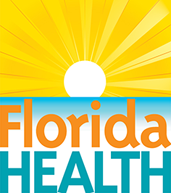It's a New Day in Public Health.
The Florida Department of Health works to protect, promote, and improve the health of all people in Florida through integrated state, county, and community efforts.
Students Working Against Tobacco Continue to Educate on Nicotine Addiction in Recognition of Take Down Tobacco National Day of Action
March 28, 2023
MILTON, FL – Students Working Against Tobacco (SWAT), is proud to observe Take Down Tobacco National Day of Action once again on March 31. The annual observance gives youth the opportunity to take a stand against the tobacco industry and denounce the addictive and destructive nature of e-cigarettes and other products. Organized by Campaign for Tobacco-Free Kids, Take Down Tobacco National Day of Action is also helping youth reach out and educate their communities as we strive towards creating the first tobacco free generation.
Along with other tobacco products, e-cigarette products contain chemicals and ingredients, including nicotine, with the ability to lead to addiction. The human brain reaches full development around the age of 25, but substances such as nicotine can dangerously impact this growth, harming the parts of the brain that control attention, learning, mood, and impulse control.[1][1] In 2022, 65.4% of Florida high schoolers reported using inhaled nicotine products, while 48.8% of Florida middle schoolers reported doing the same.[1][2]
“Santa Rosa county has SWAT clubs at Woodlawn Beach Middle, Hobbs Middle and Pace High School” said Kristie Beckstrom, SWAT Coordinator. “SWAT students take a stand against the tobacco industry thru advocacy work in their schools and the community. They dedicate time to educating others about the dangers of tobacco use and vaping. In January, SWAT members presented at a Milton City Council Meeting in support of tobacco free parks, and we are excited that, on March 14th, Ordinance No. 1983-23 passed unanimously. This ordinance prohibits smoking and vaping in public parks within Milton city limits, which helps to prevent children from being exposed to dangerous tobacco industry products.”
Tobacco companies have relied on flavored products such as fruits, candy, or menthol to catch the attention of youth and get them using their products. Previous studies have showed that most youth who use e-cigarettes first start with a flavored variety, and flavors are the primary reason youth report using e-cigarettes.[1][3] In 2022,19.9% of Florida youth reported trying electronic vapor products.[1][4] By continuing to take a stand, SWAT hopes to inspire youth to reject the tobacco industry and urge their elected officials to take action to protect youth from a lifetime of nicotine addiction.
Youth ages 13-17 who are ready to quite vaping can text VAPEFREE to 873373 to access Live Vape Free, a free text profram that provides text support, interactive content and one-on-one coach support.
To learn more about SWAT's efforts and how to get involved, visit swatflorida.com.
About Students Working Against Tobacco (SWAT)
SWAT is Florida’s statewide youth organization working to mobilize, educate and equip Florida youth to revolt against and de-glamorize Big Tobacco and the e-cigarette industry. SWAT is a united movement of empowered youth working towards a tobacco free future.
To learn more about Students Working Against Tobacco, visit www.swatflorida.com or follow us on Instagram at @swatflorida.
[1][1] U.S. Department of Health and Human Services. E-Cigarette Use Among Youth and Young Adults. A Report of the Surgeon General. Atlanta, GA: U.S. Department of Health and Human Services, Centers for Disease Control and Prevention, National Center for Chronic Disease Prevention and Health Promotion, Office on Smoking and Health, 2016.
[1][2]Florida Youth Tobacco Survey (FYTS), Florida Department of Health, Bureau of Epidemiology, 2022. (Accessed February 16, 2023)
[1][3]Hughes JR. Effects of abstinence from tobacco: valid symptoms and time course. Nicotine & Tobacco Research 2007;9(3):315-27.
[1][4] Florida Youth Tobacco Survey (FYTS), Florida Department of Health, Bureau of Epidemiology, 2022. (Accessed February 16, 2023)



Connect with DOH